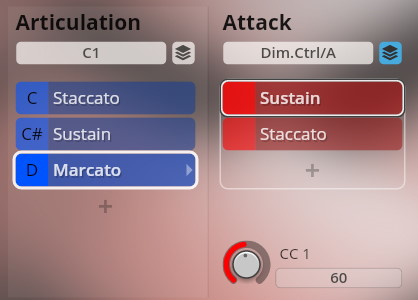SYNCHRON-ized Special Editions 2 - Extended Orchetra
Introduction
Welcome to the Vienna Symphonic Library's series of Synchron Instruments! The SYNCHRON-ized Special Editions were specifically created to give our renowned Vienna Special Editions a chance to shine in the unique acoustic ambience of the Vienna Synchron Stage, and make the ease-of-use of the Vienna Synchron Player available to them, and you. This document will provide you with information about the Libraries' instruments and structure.
For creating SYNCHRON-ized Special Editions, our sound editors went back to the raw, unprocessed sample data of the Vienna Special Edition Collections. The original recordings were completely re-edited and re-mastered in order to achieve an all-new, modern sound that excels in terms of aesthetics, playability and realism, and that is optimized for use alongside the Synchron Series instruments.
Included Presets
For SYNCHRON-ized Special Editions, our software developers added a specifically designed convolution reverb derived from Vienna MIR Pro to the Synchron Player, featuring the outstanding and unique ambience of the 540 m2 (5,813 sq.ft.) main hall of Synchron Stage Vienna. The perfectly engineered reverberation and placement presets combine customized impulse responses with expertly crafted reverb settings for each group of the ensemble. By adding the ambience of Synchron Stage Vienna's Stage A to the dry samples in real-time, SYNCHRON-ized Special Editions perfectly blend with other products of our Synchron Series.
For each instrument, there are dedicated Mixer Presets that depict different recording situations: Close, Classic, Distant, short and long reverb without convolution.
Sound categories
The Presets of each instrument group are subdivided into different Articulation categories (plus one named "Custom", ready for your own creations).
Strings
- Short Notes
- Long Notes
- Legato
- Dynamics
- Tremolo + Trills
- Pizzicato + Legno
- Harmonics
- Sul ponticello
- Con sordino (Orchestral strings)
Wind instruments
- Short Notes
- Long Notes
- Legato
- Dynamics
- Trills + Fast repetitions
Within these Articulation categories, you can select a Type (if applicable), e.g., staccato or détaché, and for some of the types there are additional options available, such as marcato attack or tremolo control.
The articulations of other instruments, such as percussion and keyboards, depend on the specific instrument's requirements and capabilities.
Custom Presets
Apart from its respective categories, every instrument also features a slot named "Custom Preset". It does not yet contain any samples, and provides slots ready for you to load patches and configure presets of your own.
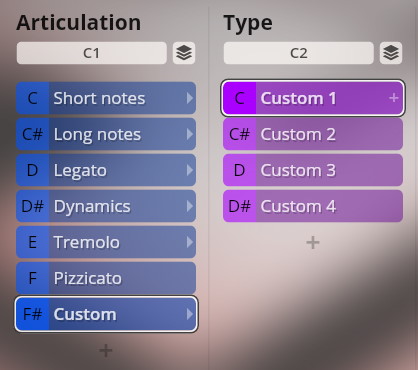
About Patches
Patches can be used to build your own custom Presets and adapt the Synchron Libraries to your specific requirements. If you want to create Presets of your own, using the instruments' Custom Preset template provides a good starting point.
About Pitch
For designating pitch, the Vienna Symphonic Library uses International Pitch Notation (IPN), which was agreed upon internationally under the auspices of the Acoustical Society of America. In this system the international standard of A=440 Hz is called A4 and middle C is C4. All pitches are written as capital letters, their respective octave being indicated by a number next to it. The lowest C on the piano is C1 (the A below that is A0), etc.
The Synchron Player software allows you to set middle C to C3, C4, or C5 according to your preference. Selecting another setting than C4 will of course also change the play ranges and keyswitches accordingly.
Walkthrough Videos
Special Edition 2 / 2 Plus – Presets
By default the keyswitch mappings for Articulations start at C1 (for Middle C = C4) for treble and mid-range instruments (e.g., violins, clarinet), and C6 for low instruments (double basses, bassoon). For the available Types, the keyswitches start at C2 for higher instruments, and at C7 for lower ones.
Additional options within Articulations or Types are offered by the Dimension Controllers. The controller function is indicated by the respective caption, as of course it may take on different tasks as needed.
02 Chamber Strings
The keyswitch mapping for Articulations starts at C1 (Middle C = C4) for violins, violas, and cellos, and at C6 for the double basses.
For the available Types, the keyswitches are mapped from C2 for violins and violas, and from C7 for cellos and basses.
There also are a "multi convolution" and a "flat stereo" Preset, both of which combine all string sections (with an overall playing range from B0 to D7) with their basic articulations except legato.
Short notes
Regular
Staccato and regular détaché.
Please note that the "regular" Type keyswitches of short notes are mapped to white keys only. This makes it easier to switch to "Plus" later as the détachés will still be triggered by playing D2 (violins, violas) or D7 (cellos, basses) on the keyboard or entering the respective note in your sequencer – meaning also that you will not have to change an existing composition.
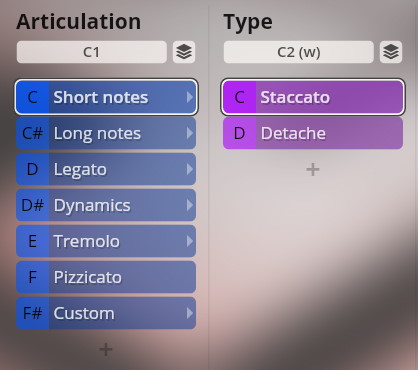
Plus
Staccato, short and regular détaché, legato and spiccato performance repetitions.
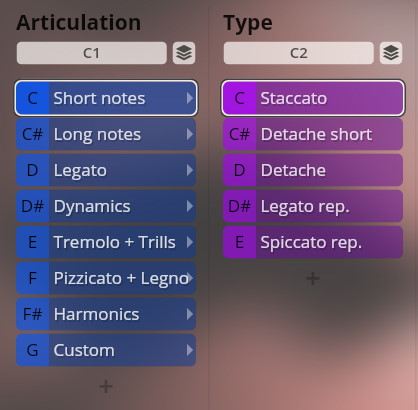
Long notes
Sustained notes, normal, marcato, and with tremolo crossfading. The articulation types are the same for the regular and Plus versions.
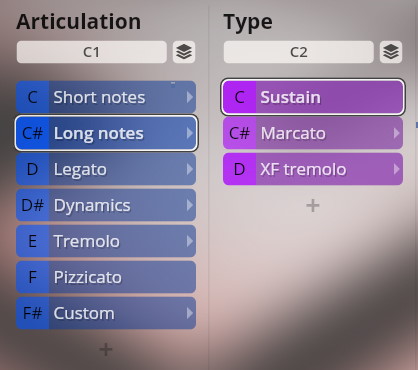
Marcato
As with regular sustains, but with the option to use Dim.Ctrl/A (CC1) to add marcato attacks to the notes.
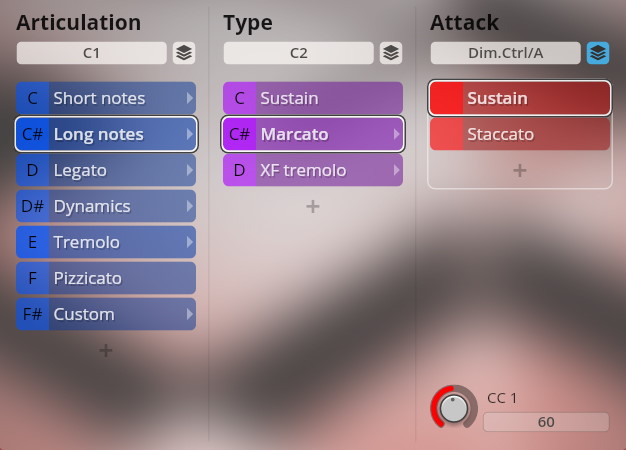
XF tremolo
Use Dim.Ctrl/B (CC20) to crossfade between regular sustains and tremolo.
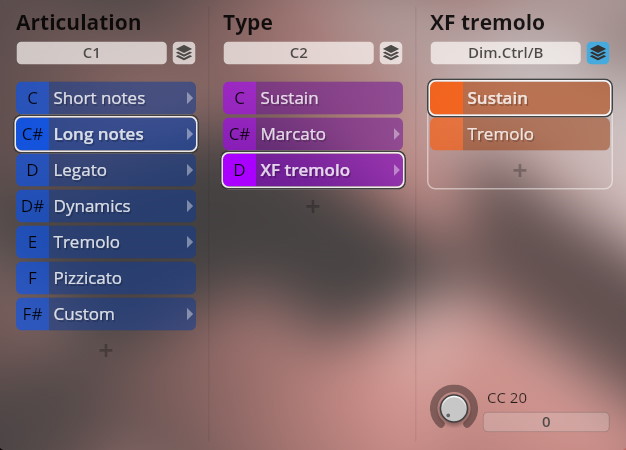
Legato
Performance legato and portamento. The articulation types are the same for the regular and Plus versions.
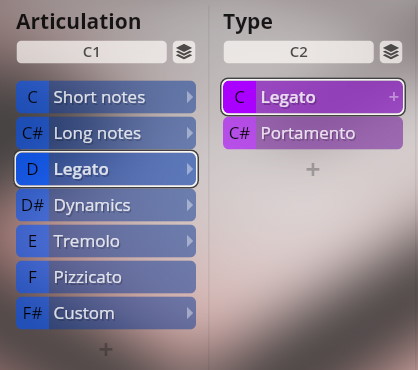
Dynamics
Regular
Sforzato, regular and with tremolo crossfading.
With the tremolo option, use Dim.Ctrl/B (CC20) to crossfade between regular sforzato and tremolo.
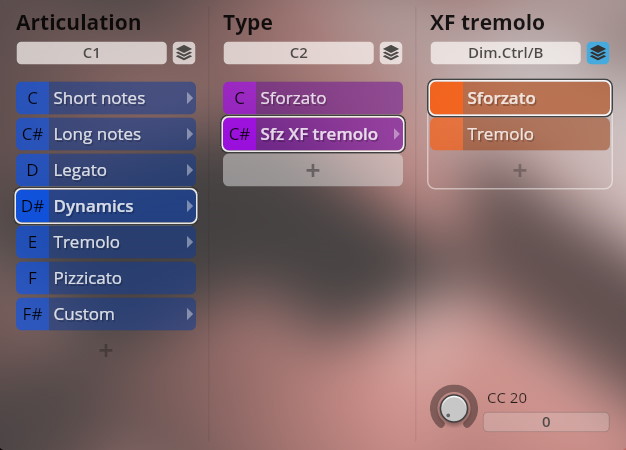
Plus
Sforzato and fortepiano, regular and with tremolo crossfading.
With the tremolo option, use Dim.Ctrl/B (CC20) to crossfade between regular and tremolo articulations.
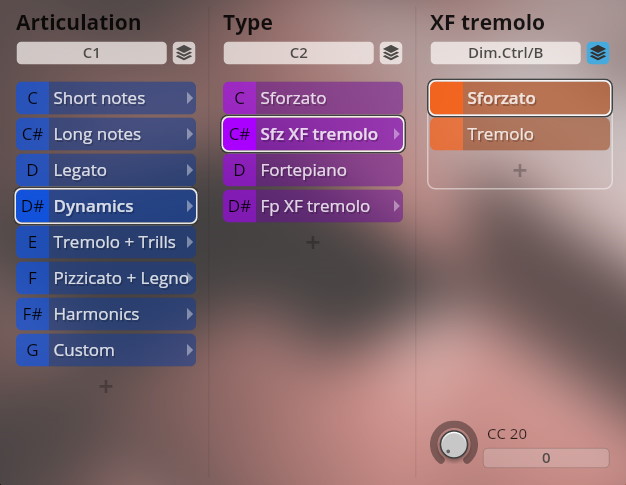
Tremolo / Tremolo + Trills
Regular
Tremolo sustains, regular and with marcato attack.
With the marcato option you can use Dim.Ctrl/A (CC1) to add marcato attacks to the tremolo notes.
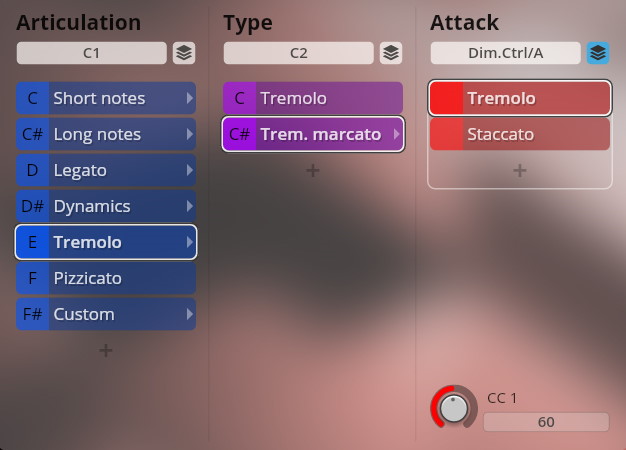
Plus
Tremolo sustains, regular and with marcato attack, half and whole tone trills, and fast repetitions at 150, 170, and 190 BPM.
With the tremolo's marcato option you can use Dim.Ctrl/A (CC1) to add marcato attacks.
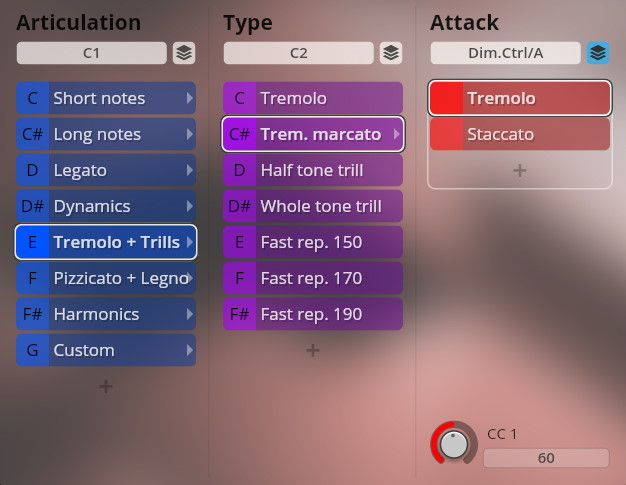
Pizzicato / Pizzicato + Legno
Regular
Pizzicato.
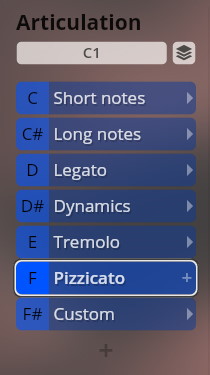
Plus
Pizzicato and snap pizzicato.
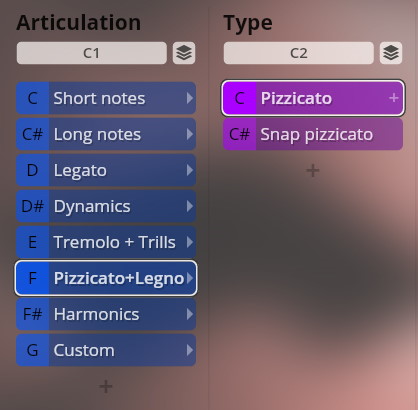
Harmonics (Plus only)
Artificial harmonics, staccato and sustained.
With the marcato option you can use Dim.Ctrl/A (CC1) to add marcato attacks to the sustained notes.
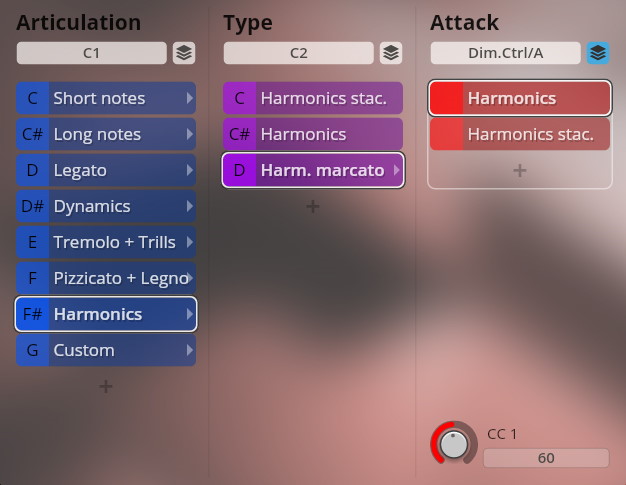
06 Plucked Instruments
03 Concert Guitar
Staccato, sustained, and legato.
The sustained notes can be played without or with vibrato using Dim-Ctrl/A (CC1).
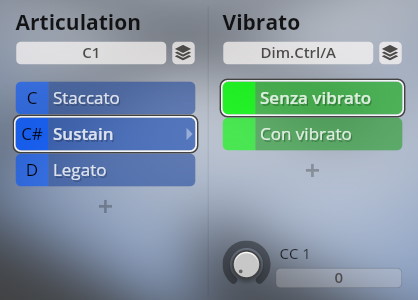
04 Overdrive
Staccato, sustained, legato, and slides.
There are no other options for the staccatos. All other articulations can be switched between without vibrato, with vibrato, and whammy bar action using Dim-Ctrl/A (CC1).
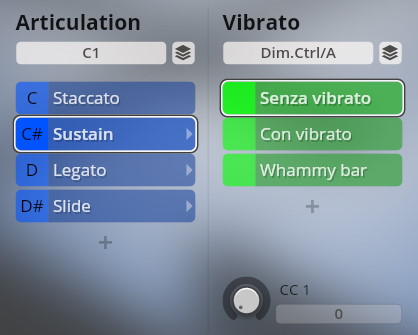
05 Upright Bass
Short notes
Staccato and portato.
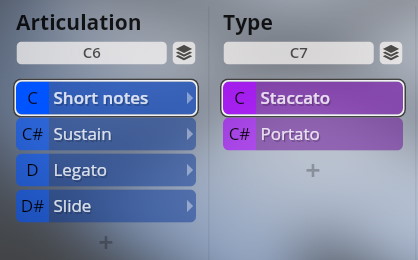
Sustain
Sustained notes, with regular and snap release.
Use Dim.Ctrl/A (CC1) to switch between no vibrato and vibrato.
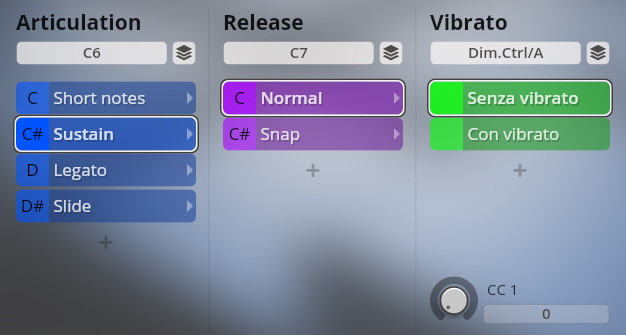
Legato, Slide
Legato notes, and slides. Both Articulations feature regular and snap release.
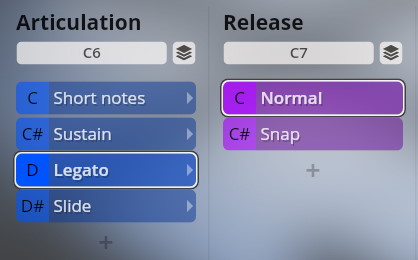
Winds
Woodwinds: flute II, alto flute, flute ensemble (3 players), Viennese oboe, oboe d'amore, oboe ensemble (3 players), clarinet in Eb, clarinet in Bb II, basset horn, clarinet ensemble (3 players), bassoon ensemble (3 players), alto saxophone, tenor saxophone, baritone saxophone.
Brass: Viennese horn, horn ensemble (8 players), piccolo trumpet, muted trumpet in C, muted trumpet ensemble (3 players), muted tenor trombone, contrabass trombone, muted trombone ensemble (3 players), contrabass tuba, Wagner tuba.
Staccato / Short notes
Regular
Staccato.
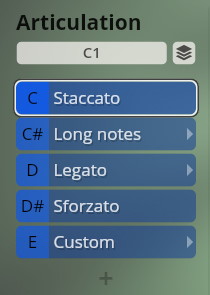
Plus
Staccato, portato, legato and staccato performance repetitions.
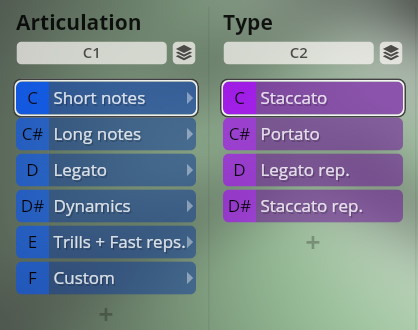
Long notes
Sustained notes, normal and with marcato crossfading. The articulation types are the same for the regular and Plus versions.
With the marcato option, use Dim.Ctrl/A (CC1) to add marcato attacks to the notes.
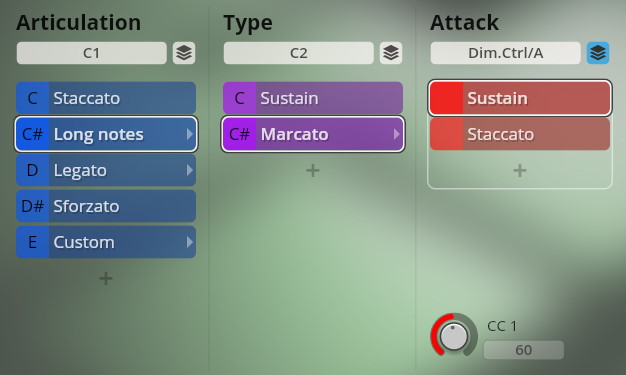
Legato
Performance legato, normal and with looped sustains. The articulation types are the same for the regular and Plus versions.
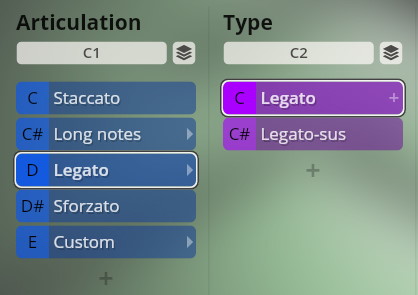
Sforzato / Dynamics
Regular
Sforzato.
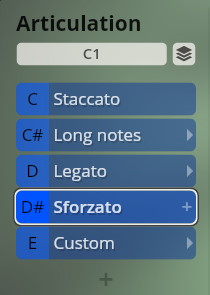
Plus
Sforzato and fortepiano.
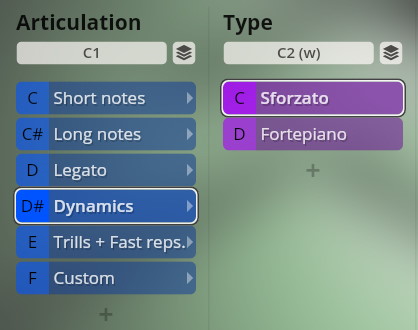
Trills + Fast repetitions (Plus only)
Half and whole tone trills, and fast repetitions at 150, 170, and 190 BPM. Please note that some wind instruments do not feature repetitions, while others cannot play proper trills, and therefore lack these Articulations. Accordingly, the slot names will only be "Trills" (e.g., oboes) or "Fast repetitions" (trombones).
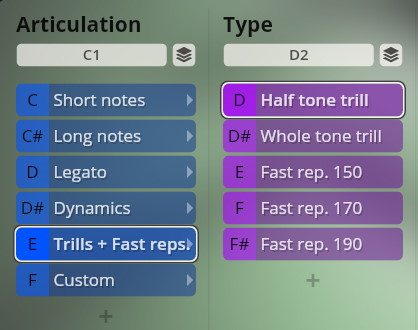
32 Keyboards + Mallets
02 Harpsichord (Cembalo)
Harpsichord.
Range: F1–E6
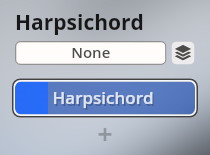
03 Konzerthaus Organ
Plenum and Flutes registration. Manual and pedal are implemented separately as well as in a combined version with the pedal transposed down so that both can be played on the same keyboard.
Keyswitches are mapped to white keys only.
- Range
- Manual: C2–A6
- Pedal: C2–F4
- Combined: C1–A6
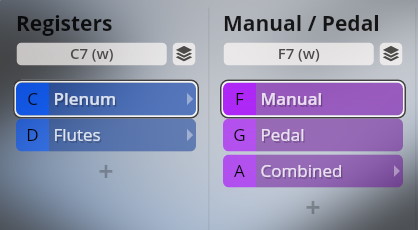
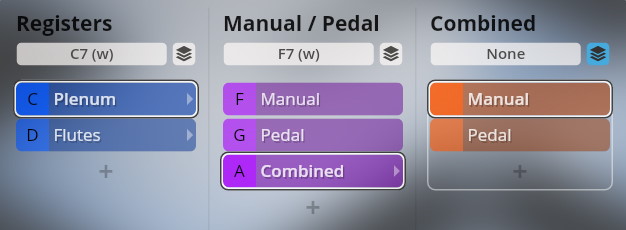
04 Harmonium
Stops: Aeoline, Clairon-Fifre, Clarinet Bourdon, and Grand Jeu
Keyswitches are mapped to white keys only.
Range: F1–E6
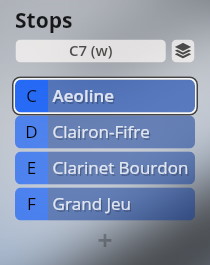
05 Prepared Piano
Effects: Chain, Harmonic, Glass, and Glissandi.
- Range
- Chain, Harmonic, Glass: A0–C8
- Glissandi: C4–A5
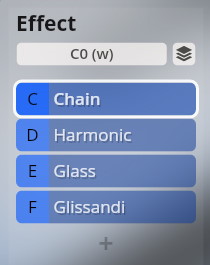
Glissando Mapping:
- C4–A4 upwards
- C5–A5 downwards
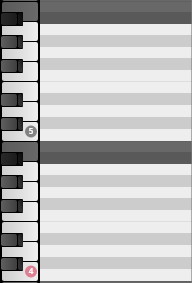
35 Synchron Percussion
01 Synchron Timpani
Single hits and rolls.
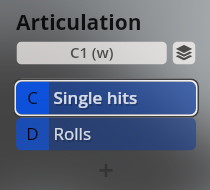
- Keyboard mapping
- Single hits: A2–B3 left hand, A5–B6 right hand
- Rolls: A2–B3

02 Synchron Bass drum
Single hits, tremolo, and upbeats.
- Keyboard mapping
- C3/D3: single hits left/right
- C#3: tremolo
- F3/G3/A3: 1–3 upbeats
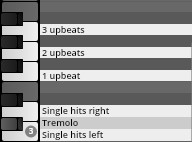
03 Synchron Snare drum
Single hits, tremolo, and upbeats.
- Keyboard mapping
- C4/D4: single hits left/right
- C#4: tremolo
- F4/G4/A4: 1–4 upbeats
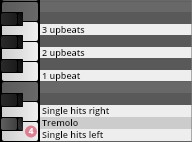
04 Synchron Tambourine
Single hits, tremolo, and upbeats.
- Keyboard mapping
- C6/D6: single hits left/right
- C#6: tremolo
- F6/G6/A6: 1–6 upbeats
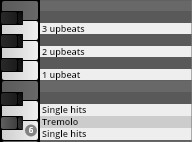
05 Synchron Concert toms
Low, medium, and high concert toms, single hits and tremolo.
- Keyboard mapping
- C/D: single hits left/right; D#: tremolo
- C7–D7: low tom
- F7–G7: medium tom
- A7–B7: high tom
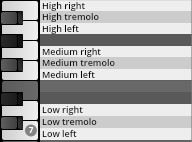
06 Synchron Piatti
Single hits, normal and damped.
- Keyboard mapping
- C6/D6: single hits left/right
- C#6/D#6: damped hits left/right
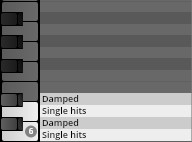
07 Synchron Cymbal
Single hits; tremolo normal and crescendo.
- Keyboard mapping
- Mapped to white keys only.
- C5/D5: single hits left
- F5: tremolo
- G5–B5: tremolo crescendo, 1/2/4 sec.
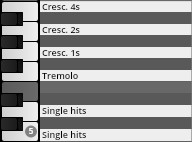
08 Synchron Tam-tam
Single hits, tremolo, and scratches.
- Keyboard mapping
- G6/A6: single hits left/right
- G#6: tremolo
- A#6: scratches
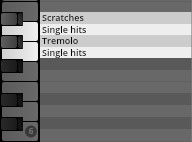
50 Appassionata Vol 2 Bonus
The keyswitch mapping for Articulations starts at C1 (Middle C = C4) for violins, violas, and cellos, and at C6 for the double basses.
For the available Types, the keyswitches are mapped from C2 for violins and violas, and from C7 for cellos and basses.
There also are "multi convolution" and "flat stereo" Presets, each combining all string sections, with an overall playing range from B0 to D#7.
Volume 2 features regular articulations, Volume 2 Plus contains the same played con sordino.
Articulations
Staccato, sustained, and marcato.
With the marcato option, you can use Dim.Ctrl/A (CC1) to add marcato attacks to the notes.
